Published by SailGP 1 June 2021
Given the incredible speeds the F50 hits while racing, it’s no surprise SailGP’s number one priority is safety.
During the first event of Season 2, the Great Britain SailGP Team clocked a remarkable top speed of 94.8 km/h (51.2 knots/58.9 mph) – setting a new SailGP record – in rough conditions in Bermuda, with the wind speed topping 20 knots on the second day of racing.
The Brits made the most of the intense conditions on the Great Sound to set the new speed record, but the United States Team was not so lucky – being involved in a collision with Japan and then capsizing to end its event early.
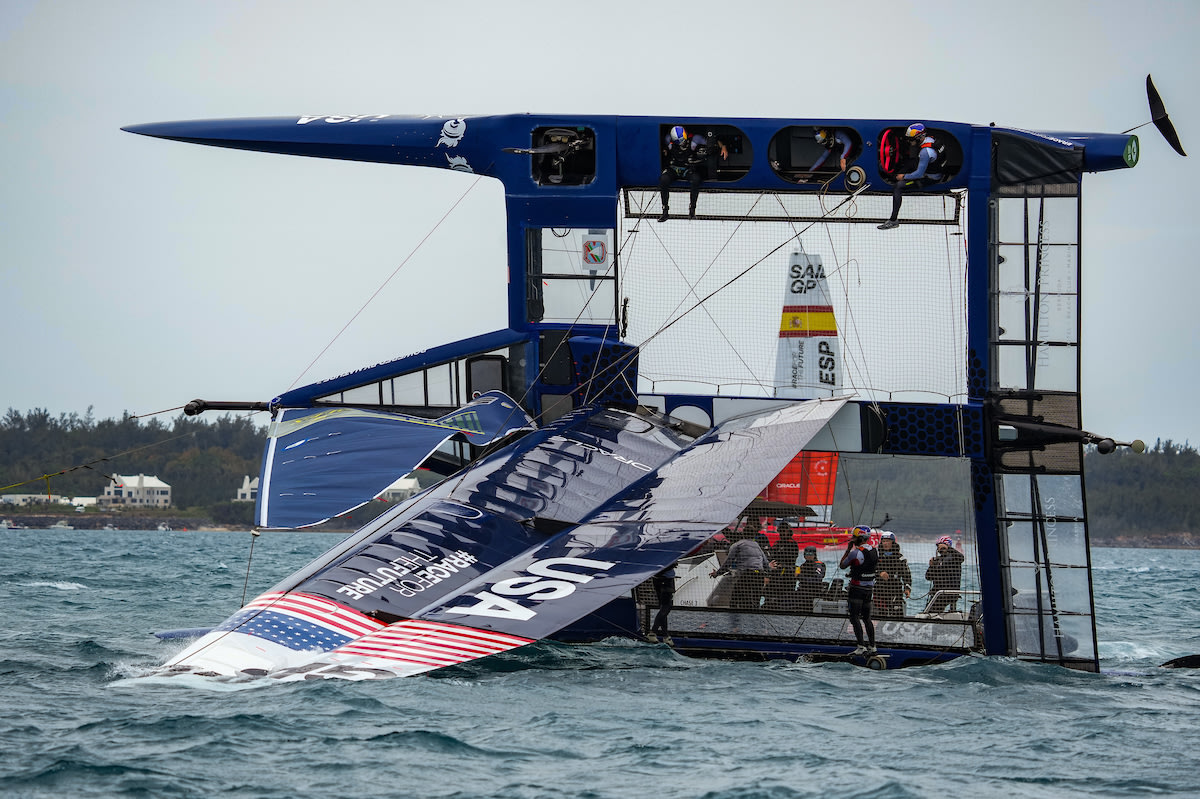
Thankfully, none of the US Team were injured in either of the incidents, and the SailGP Safety Team were quickly on the scene in their Safety Boat.
The Safety Team are not employed by SailGP to only react to incidents, however, as they also lead safety workshops with the athletes before they even get on board the F50.
These Safety Training courses are to prepare the athletes for any situation that may occur on the water, whether that is a collision between boats, a capsize, or even the F50 fully inverting to trap the athletes underwater.
Sam Bennett, a Rescue Swimmer on the SailGP Safety Team, detailed some of the possible incidents that could occur during racing.
“Some of the biggest risks involved when the boats capsize, but are not fully inverted, include falling from the cockpits into the daggerboard foils, wing or other parts of the boats,” Bennett tells SailGP.com. “If the boat is fully inverted and the sailors are trapped underneath, the biggest risk for them is that they are not able to breathe, so they need to use the air systems they have integrated into their impact vests.
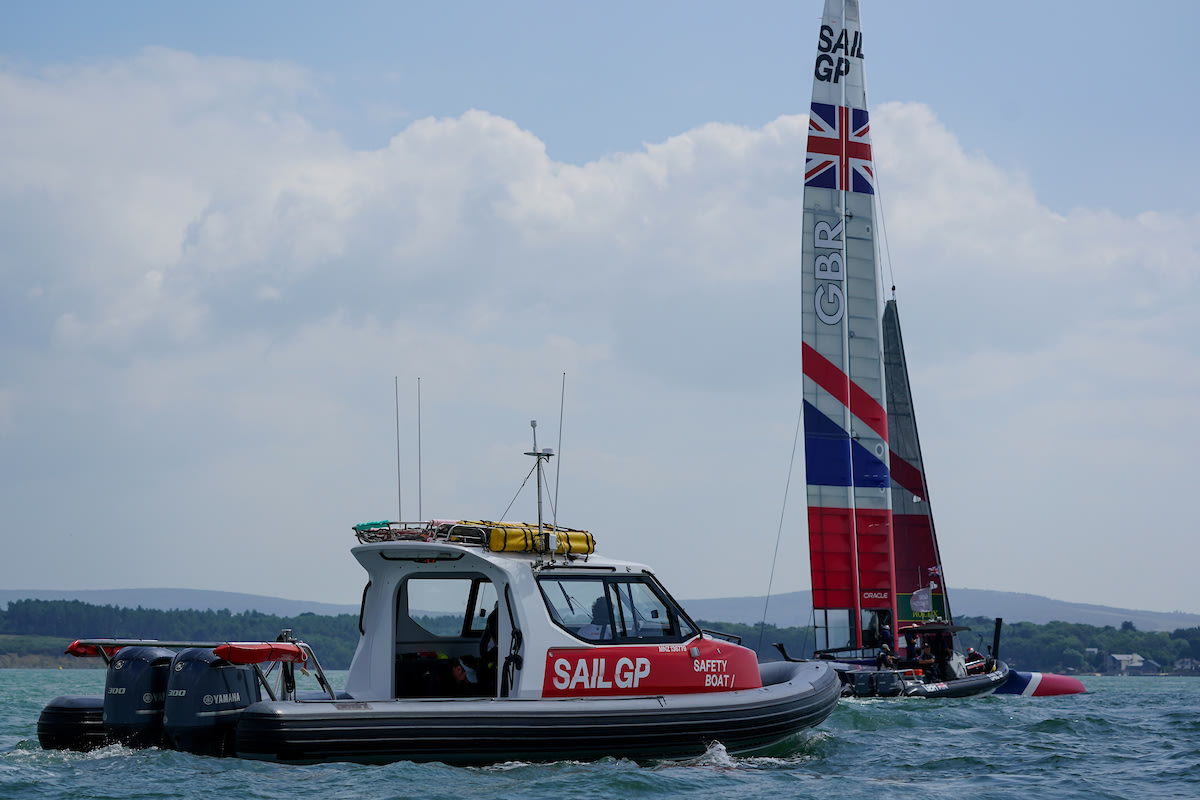
“Furthermore, a key risk that is brought on by the higher speeds of these boats is the g-force at play while they are sailing. If they lose control there is the potential of an athlete being thrown off the F50.
“All the athletes wear our safety tether system which minimizes the chances of them going overboard. Also, the smallest mistake with these boats can cause a collision or a capsize – as we saw in Bermuda.”
One of the key areas of focus during Safety Training is on controlling breathing and heart rate, as the athletes are not afforded time to relax and calm down if a boat capsizes mid-race. In particular, grinders would have been working especially hard on the boat so they are expected to have a very high heart rate at the moment of a capsize.
The priority for all athletes involved in a capsize is to quickly reduce their elevated heart rate and slow their breathing, to bring on a state of calmness during which the situation can be assessed. In the Safety Training courses, the athletes are tasked with completing 20 burpees on-shore and then immediately jumping in the water, upon which their first aim is to find this state of calmness.
The athletes do this task one-by-one, and when they have successfully reduced their heart rate and slowed their breathing, they begin a sort of underwater obstacle course to simulate being trapped beneath an F50. There is netting they must cut and move through, and various locations where air is trapped – as it would be in a cockpit – so the athletes can lift their heads and catch their breath before continuing with the drill.
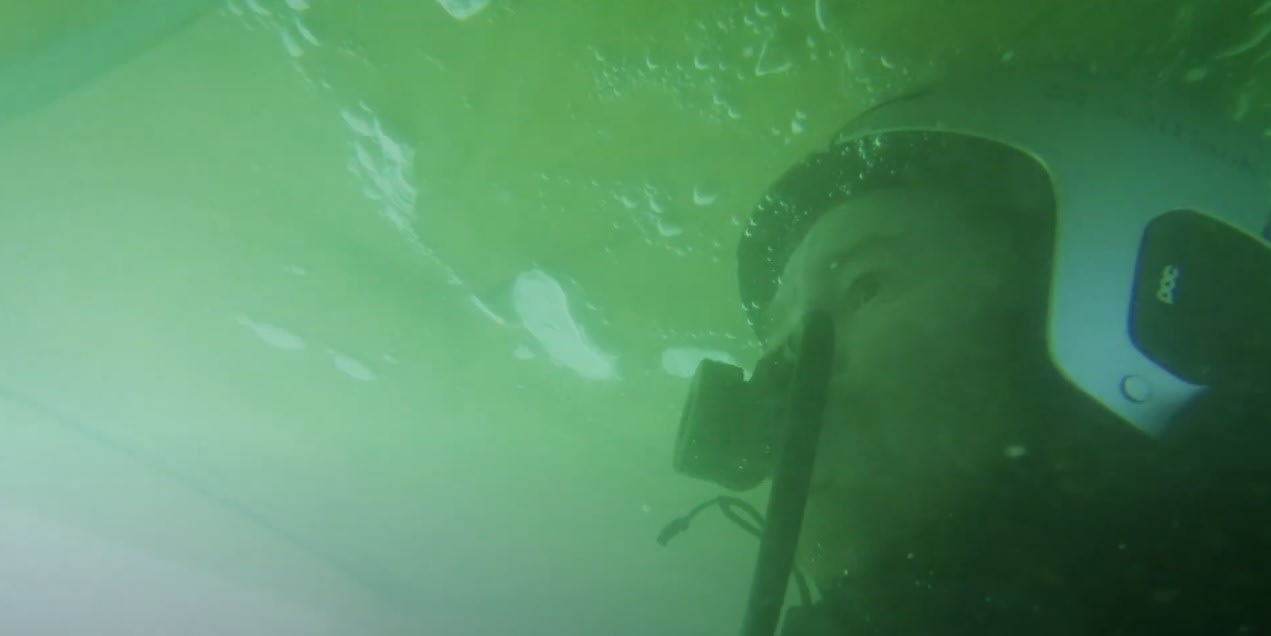
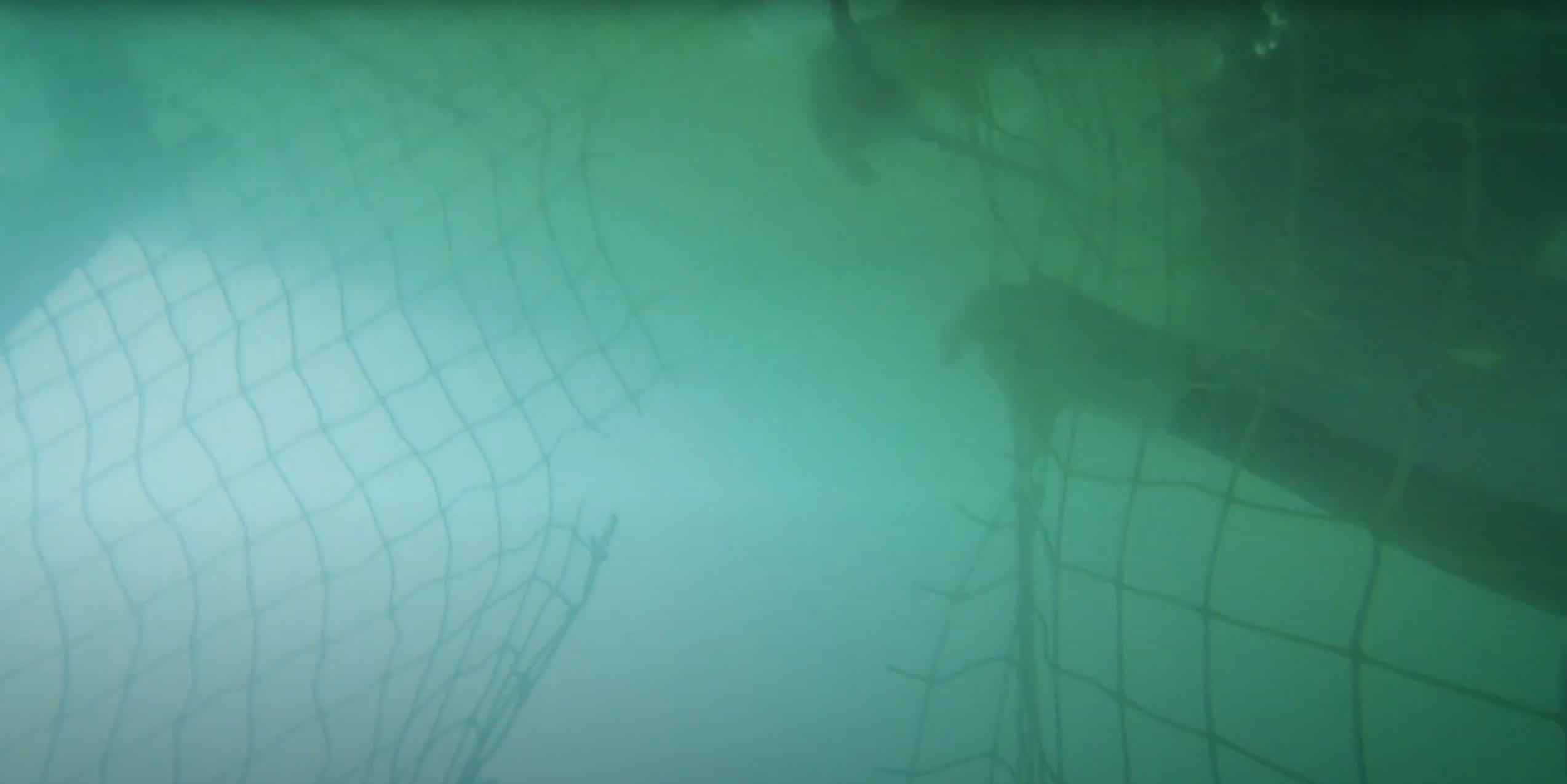

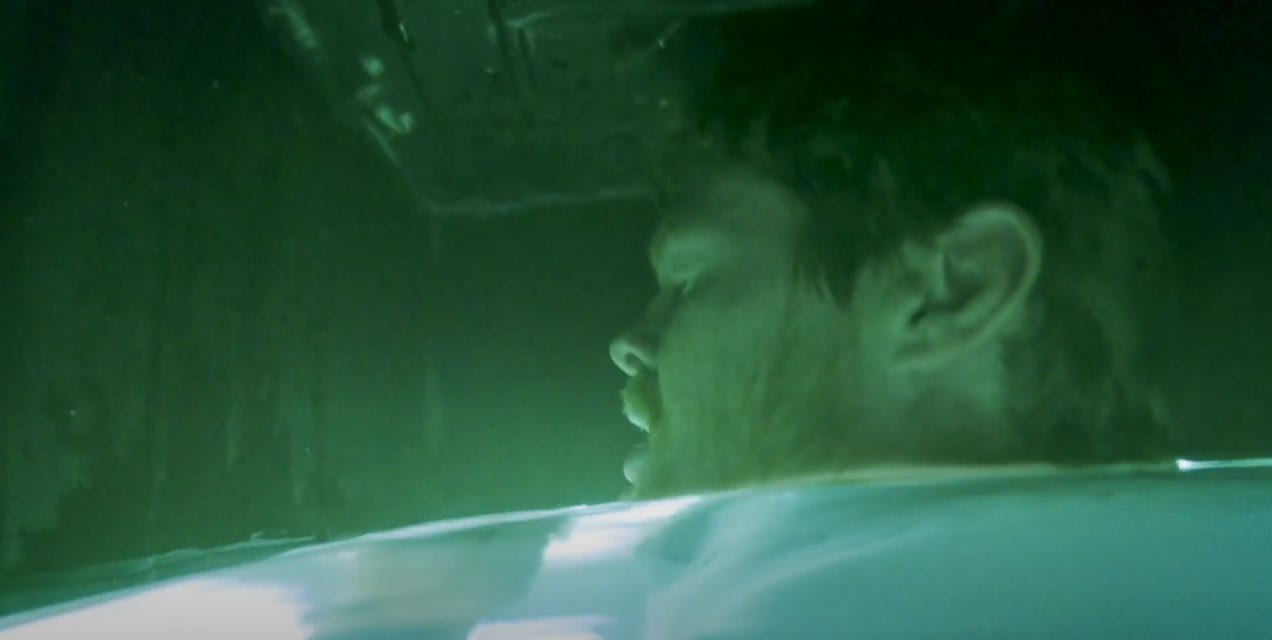
Learning to control their breathing and heart rate is not all the athletes are taught in Safety Training, however, as they must also ensure what they are learning becomes second nature.
Bennett explained why it is so important for the athletes to be able to recall this safety info at a moment’s notice.
“It is a critical part of the training that all the rescue skills become muscle memory for the athletes,” he added. “By creating this muscle memory, we ensure an immediate and effective response on the part of the crew, so that in the unlikely event of a capsize, they are in a position to act intuitively and decisively in order to self-rescue.
“When every sailor knows the drill, they don’t need time to think, they just act in the fastest and safest manner possible. This is how we save lives.”
Even after passing the Safety Training course, the athletes’ safety on the boat is not taken for granted when the racing begins. As well as the Safety Boat being near at hand to deal with any incidents, the athletes themselves are prepped with plenty of gear to help them out of scary situations.
During events, each F50 crew member has to wear a buoyancy aid, a harness, a helmet, a personal air supply, and a readily accessible knife. The boats themselves are also equipped with various tools to limit the risk of serious injury during an incident, including a Man Overboard alarm system, grab handles, spare air supplies and knives, and fail-safes for both the foil and rudder control systems.
So, the next time you are watching one of our thrilling races, keep your eyes on the Safety Boat and think of all the fine work the Safety Team do to ensure SailGP remains safe, scrutinized and at the cutting-edge of sail racing.
